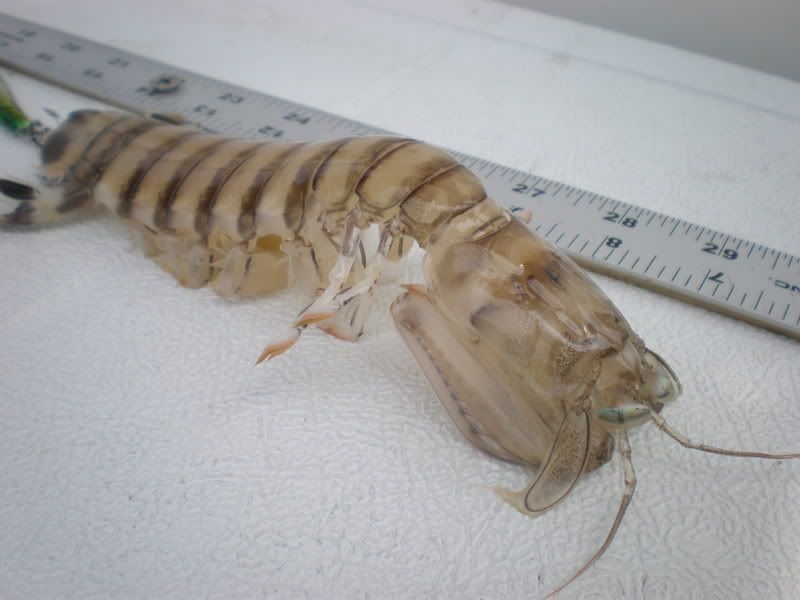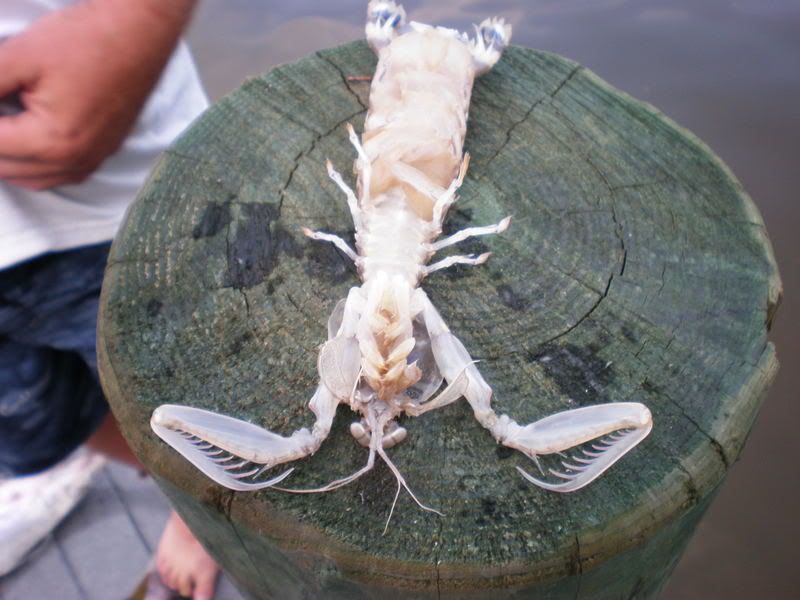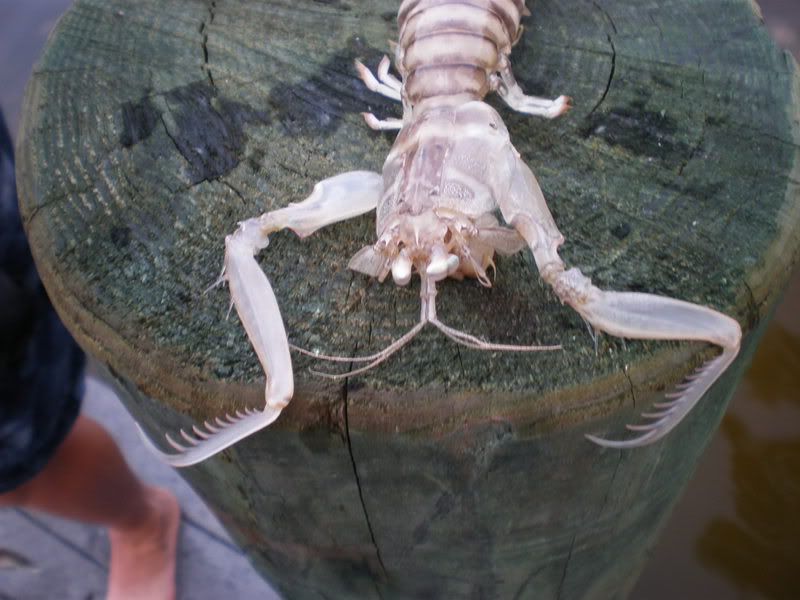Your guess was not far off: It's a Mantis Shrimp. They're a very cool group of highly specialized crustaceans and a good example of convergent evolution: Two unrelated groups of organisms evolve similar traits that enable them to fill a certain ecological niche. Praying Mantises and Mantis shrimps both hunt in similar ways, that is by stalking their prey and using their excellent eye sight for the pursuit. They then strike with their specialized appendages to capture the prey. I pasted a piece from a Wikipedia article below, which you may find interesting. I heard the claws can inflict severe damage even to a human, so it is a good idea to steer clear of them.
Both types strike by rapidly unfolding and swinging their
raptorial claws at the prey, and are capable of inflicting serious damage on victims significantly greater in size than themselves. In smashers, these two weapons are employed with blinding quickness, with an acceleration of 10,400
g and speeds of 23
m/s from a standing start
[6], about the acceleration of a .22 caliber bullet. Because they strike so rapidly, they generate
cavitation bubbles between the appendage and the striking surface
[6]. The collapse of these cavitation bubbles produces measurable forces on their prey in addition to the instantaneous forces of 1,500
N that are caused by the impact of the appendage against the striking surface, which means that the prey is hit twice by a single strike; first by the claw and then by the collapsing cavitation bubbles that immediately follow
[7]. Even if the initial strike misses the prey, the resulting shock wave can be enough to kill or stun the prey.









